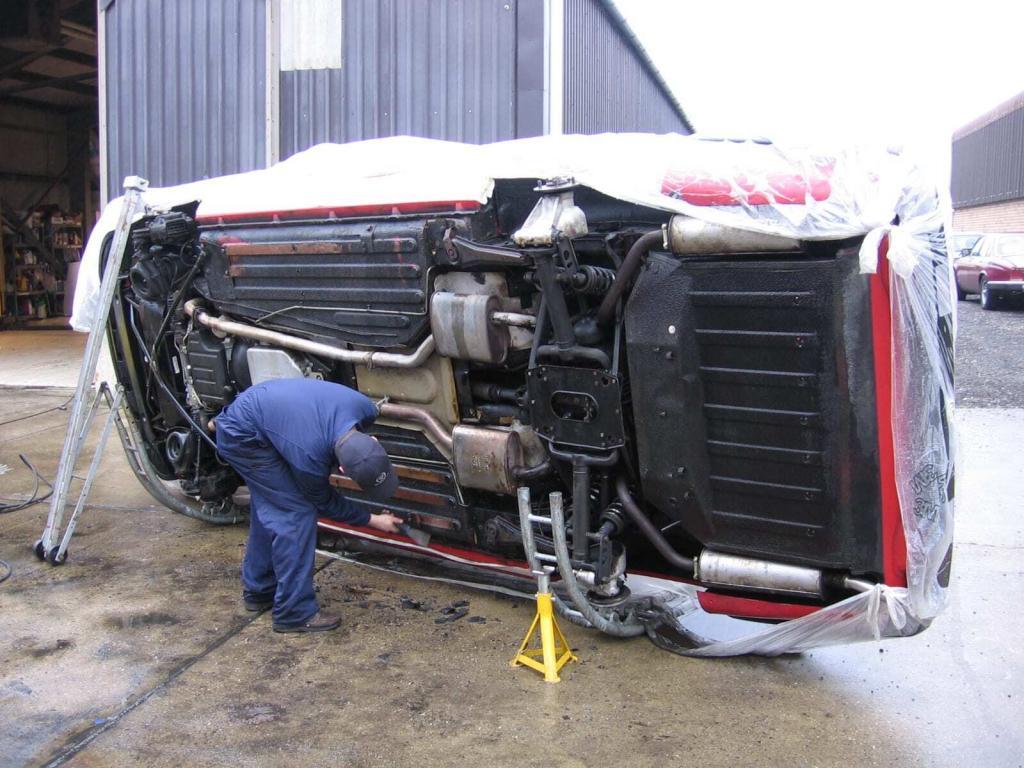Five Crucial Measures to Prevent Classic Car Rust
One of the biggest potential dangers to your classic car’s wellbeing is rust. Rust can cause the structure of any car to become weakened and unstable, making it unsafe to drive and liable to fail MoT testing.
This build up of corrosion usually progresses from invisible areas until it becomes visible through the paintwork or is spotted during an underside inspection – by which time remedial action can be very expensive.
Rust forms when moisture and air come into contact with unprotected steel. This process is hastened by the presence of sulphur dioxide from the atmosphere and ionic compounds such as road salt. Read these tips on how to ensure that your classic car doesn’t turn into a rust bucket.
1. Keep your classic car clean, especially on the underside and wheel areas
Rust is often more likely to take hold of your vehicle if it’s dirty and mud is allowed to accumulate underneath. When washing your car pay special attention to the wheel arches and sill ends. When using your vehicle in the winter months, mud combined with road salt can become trapped within crevices around the wheel wells and underbody. Mud tends to retain moisture, therefore contributing greatly to rusting.
The best cleaning method is to use a concentrated spray from a garden hose to dislodge mud from inside the wheel arch lips, and the sill ends. A high pressure washer (e.g. Karcher) is too powerful and can lift off the protective underseal. Ideally, keep an eye out for exposed and rusty steel in these areas, get them thoroughly dry, prime with zinc-rich paint and apply brushing underseal such as Waxoyl underbody sealant.
2. Inspect your classic car carefully
Make sure you inspect the whole of the vehicle’s structure, both topside and underside. If the surface of the original protective coating has deteriorated over wider areas, it’s best to remove all the old underseal and re-coat the whole surface to provide long-term protection.
Moisture tends to accumulate within enclosed sections around the vehicle such as doors, sills, chassis sections and strengthening areas, eventually resulting in rusting from within. Due to access problems, it can be near-impossible to apply protective paint within such cavities, but rust-resisting wax or oil-based fluids can be introduced, via drilled and plugged holes, ideally under high pressure from a special spray gun. This can be tricky, so it is recommended that you contact a reputable rust protection specialist such as KWE who will be able to do this for you.
3. Give your classic car a run in the winter
Some people believe that you shouldn’t use your classic car in the winter because of the unfavourable weather conditions and salt on the roads. In reality, leaving your vehicle unused in the winter can do more harm than good. Ideally, you should aim to start your car at least once a month, taking it for a short drive in dry conditions to bring the engine up to full operating temperature have the aircon on and using the brakes frequently This will ensure that the brake discs remain rust-free, and moving parts remain freed-up. It is important to get the engine thoroughly warm so as to evaporate the harmful acidic moisture that can build up in under-used engines. We advise keeping the aircon on all year round to reduce leakage from the pressure seals.
4. Store your classic car correctly
Storage of your classic car is very important, particularly in the winter. The best place to store your vehicle is within a dry and airy barn, garage or large carport on a concrete or other dry base. Wood or brick garages are preferable to pre-cast concrete units, which tend to ‘sweat’ in very cold conditions. The objective is to keep air flowing around the car, but not let rain fall on it. There should be no damp coming up from the ground, so parking the car on grass or earth is not advised. One way to avoid the damp problem associated with storage is to use an inflatable plastic tent, with fans to keep air moving inside, or a portable frame garage tent. Disconnect the battery (see also our battery care article) and, if the car is under cover, open the windows a little to keep the inside aired.
We do not recommend full body covers outdoors for long term storage outside because the paint is likely to be damaged by wind-induced abrasion and can create micro-blistering in the paint. Any damp under the car will be trapped and start causing rust and mould to grow. However, especially with convertibles, we recommend use of a cap or roof cover which just covers the roof. If the car is stored indoors then a lightweight indoor cover is recommended to keep the dust off. Be aware of rodent damage – mice frequently chew through cables and hoses on undisturbed cars. We recommend placing several (pet-safe) mousetraps around the car.

5. Consult a classic car specialist
To ensure that you aren’t leaving the rusting of your classic car to chance, why not speak to the experts? KWE are very experienced in preventing and remedying rust, and have developed techniques which make our cars last a lot longer than average. We know where to look for rust, and offer both cavity wax injection for box sections, and full underbody sealant renewal.
We recommend repeating this inspection and proofing process every second year. This regime vastly reduces the chance of further rusting. If the customer specifies a bare metal re-spray it is then possible to inspect any previous topside problems and rectify them if necessary.
We’ll ensure that your classic car doesn’t rust away. Download our pdf article on the subject: CavityWaxInjection for more information on our cavity wax rust protection, service or call us on +44 (0) 1635 30030.
If you found this article helpful please hit the like button below to let us and others know.
